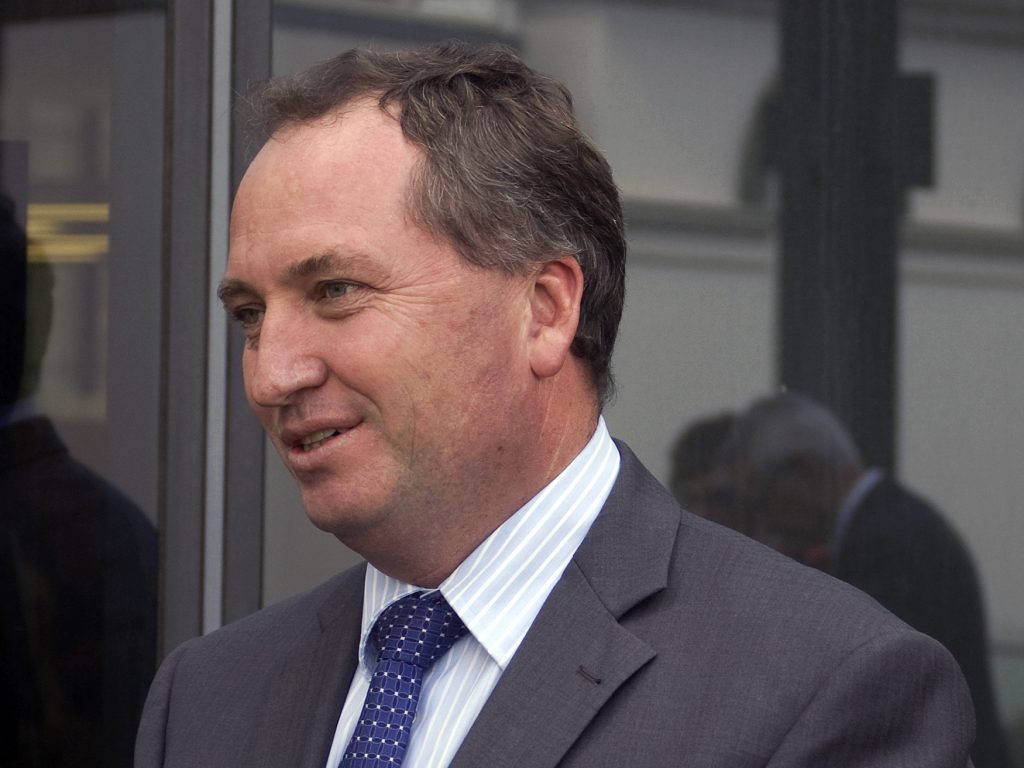Barnaby Joyce and Fiona Nash were elected to the Senate in 2004, at a time when telecommunications was a central political issue of the day – courtesy of the Howard Government’s Telstra sale plans.
It is hard to convey just how hot this issue was at the time. Labor was ready to die in a ditch before it would let John Howard sell-down the government’s stake in Telstra below 50 per cent (as the T3 sale would do.)
Lots of people were cranky about Telstra’s market dominance and lack of infrastructure competition. The internet was becoming mainstream, and shitty broadband was a grassroots issue.

Nowhere was the crankiness and the FOMO (fear of missing out) noisier than in the bush.
It was in this telecommunications climate that Fiona and Barnaby came to Canberra to take up their seats in the new Senate in July 2005. Fiona was something of a known quantity. She had worked as a staffer at Parliament House for Nationals Ministers Mark Vaile and Larry Anthony up until her Senate run.
In Canberra, Barnaby was a bit of an unknown. He was being described as a maverick of Queensland politics, but now he was coming to Canberra (where he confirmed that status on the national stage.) The ‘maverick’ status meant Barnaby was being closely watched as the Howard Government worked on its strategy for getting the Telstra sale through the Senate.
This is all ancient history. Except that here we are in 2016 and an election is looming. Barnaby is now Deputy Prime Minister Joyce as the Member for New England, and Fiona – still a Senator – is the deputy leader of the Nationals.
Telecommunications is going to be a huge issue in this election (or more specifically, access to superfast broadband speeds is going to be a huge issue.) And it will be an especially saleable policy issue in the bush.
[UPDATE] Since this story was first published on Friday, the Prime Minister has reshuffled his Ministry. Fiona Nash, courtesy of her election to become deputy leader of The Nationals, has earned a Cabinet position with a significantly expanded portfolio of responsibilities.
And this is interesting. She retains Rural Health, and has been given the Regional Development half of Warren Truss’ old portfolio, as well as Regional Communications.
Regional Communications has not been a separate area of responsibility for some time. While Luke Hartsuyker had been a junior shadow minister for regional comms under Malcolm Turnbull when the Coalition was in opposition, the title was dropped by Abbott when he named his first ministry.
Under Senator Nash, it means Regional Communications has gone from nowhere to being a Cabinet position with the stroke of a pen. Actual policy is still developed and implemented through Communications. But it means another advocate in Cabinet on this important political issue during an election year. [UPDATE ENDS]
Barnaby Joyce and Fiona Nash are very familiar with regional telecommunications issues. They have form in this area.
Having just entered the Senate in 2005, Barnaby and Senator Nash sponsored (and launched at Parliament House) a Page Research Centre paper on “Future-Proofing Telecommunications in Non-Metropolitan Australia.” (Page Research is a Nationals think-tank.)
The paper called for government to make a $7 billion infrastructure investment in fibre – building a nation-wide fibre-optic network that would deliver comparable services to the bush that were available in the cities.
Barnaby coined the phrase “a Glass Snowy” to describe this as a nation-building project on a scale of the Snowy Mountains scheme.
This was the kind of outlandish claim that only freshman Senators can make. It pulled a lot of attention, but was generally pilloried by the Howard leadership team as silly. It was written off as crazy, something that only the Nationals could conjure.
Literally crazy. The government should invest $7 billion building phone infrastructure? You. Are. Mental.
So naturally this proposition went nowhere. Except that less than three years later Kevin Rudd and Stephen Conroy unveiled Labor’s plans for a national fibre network ahead of the 2007 election – a project that became the NBN. Kevin Rudd even stole Barnaby’s ‘glass snowy’ line.
So, as I was saying, 2016 is an election year. The NBN has become the largest and most politicised bun-fight in the history of Australia. Tens of billions of dollars are being spent.
The NBN has been a sleeper issue. Yes there is a hard core group of followers who watch every development. But generally, people find the incremental arguments of the ideologues too hard to follow.
But an election year tends to focus the attention. A shitty broadband connection that has no roadmap to improvement is a vote changer.
Labor has been laying low, practicing the patience of Job as they wait for the chickens to come home to roost on the new NBN model, where Malcolm Turnbull takes ownership of the project (to mix a whole lot of metaphors.)
Telecommunications in the bush is as big an issue in 2016 as it was in 2005, when Barnaby Joyce and Fiona Nash were advocating their out-of-the-box plan for the nation. Access to decent broadband is a fundamental political (and economic) issue for the regions.
Just to recap: Barnaby is now the deputy Prime Minister, and Fiona Nash is the deputy leader of the Nationals. Regional telecommunications just became a thing again. This is one of the reasons people are wondering again about that ‘maverick’ tag.
Do you know more? Contact James Riley via Email.

